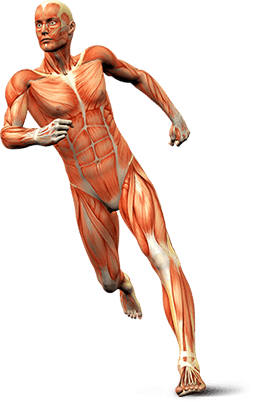Shoulder Instability
Glenohumeral instability (shoulder instability) is a chronic condition that causes frequent dislocations of the shoulder joint. A dislocation occurs when the end of the humerus (the ball portion) partially or completely dislocates from the glenoid (the socket portion) of the shoulder. A partial dislocation is referred to as a subluxation whereas a complete separation is referred to as a dislocation. The common symptoms of shoulder instability include pain with certain movements of the shoulder; popping or grinding sound may be heard or felt, swelling and bruising of the shoulder may be seen immediately following subluxation or dislocation. Visible deformity and loss of function of the shoulder occurs after subluxation or sensation changes such as numbness or even partial paralysis can occur below the dislocation as a result of pressure on nerves and blood vessels.
The risk factors that increase the chances of developing shoulder instability include:
- Injury or trauma to the shoulder
- Falling on an outstretched hand
- Repetitive overhead sports such as baseball, swimming, volleyball, or weightlifting
- Loose shoulder ligaments or an enlarged capsule
Treatment
The goal of conservative treatment for shoulder instability is to restore stability, strength, and full range of motion. Conservative treatment measures may include the following:
- Closed Reduction: Following a dislocation, your orthopaedist can often manipulate the shoulder joint, usually under anesthesia, realigning it into proper position. Surgery may be necessary to restore normal function depending on your situation
- Medications: Over the counter pain medications and NSAID's can help reduce the pain and swelling. Steroidal injections may also be administered to decrease swelling
- Rest: Rest the injured shoulder and avoid activities that require overhead motion. A sling may be worn for 2 weeks to facilitate healing
- Ice: Ice packs should be applied to the affected area for 20 minutes every hour
When these conservative treatment options fail to relieve shoulder instability, your surgeon may recommend shoulder stabilization surgery. Shoulder stabilization surgery is done to improve stability and function to the shoulder joint and prevent recurrent dislocations. It can be performed arthroscopically, depending on your particular situation, with much smaller incisions. Arthroscopy is a surgical procedure in which an arthroscope, a small flexible tube with a light and video camera at the end, is inserted into a joint to evaluate and treat of the condition. The benefits of arthroscopy compared to the alternative, open shoulder surgery are smaller incisions, minimal soft tissue trauma, less pain leading to faster recovery.
Glenohumeral Stabilization - Arthroscopic Procedure
Glenohumeral stabilization or shoulder stabilization is a surgical procedure to treat chronic instability of shoulder joint. The shoulder is the most flexible joint in our body making it more susceptible to instability and injury. Shoulder instability occurs when the head of the humerus (upper arm bone) dislocates from its socket (the glenoid) as a result of a sudden injury or overuse. The condition is also known as glenohumoral dislocation. The repeated dislocation of the humerus out of its socket is called chronic shoulder instability. A tear in the labrum or rotator cuff and ligament tear in the front of the shoulder (a Bankart lesion) may lead to repeated shoulder dislocations. Shoulder instability is often treated by the technique called stabilization and can be performed arthroscopically or with open surgical procedure. Arthroscopic procedure is more commonly preferred because of certain advantages over the open procedure.
Shoulder instability may be caused by injury, falling on outstretched hand, repetitive overhead sports such as basket ball, volley ball or weight lifting. Patients with shoulder instability may have severe pain, swelling, popping or grinding sound, partial or complete dislocation, loss of sensation or partial paralysis, and loss of function.
Arthroscopy is a minimally invasive surgery and is performed through two tiny incisions (portals), about half-inch in length made around the joint area. Through one of the incisions, arthroscope (small fiber-optic viewing instrument) is passed. A television camera attached to the arthroscope displays the images of the inside of the joint on the television monitor, which allows your surgeon to look at the cartilage, ligaments and the rotator cuff while performing the procedure. A sterile saline solution is pumped into the joint which expands it and gives a clearer view to the surgeon. Bone spurs, defects or tissue tears will be identified. Your surgeon makes use of tiny surgical instruments which are passed through the other incision to treat the condition. Any tear in the rotator cuff will be sutured or stapled. The sutures will be held in place with help of a small anchor which is drilled into the upper part of the humerus. Further, a thermal shrinkage device may be used in order to make the ligaments tight and prevent instability.
Following the procedure, your surgeon may advise use of a continuous passive motion machine to prevent stiffness and improve range of motion of the shoulder joint. Pain medications will be prescribed to keep you comfortable. A shoulder sling can be worn for 4-6 weeks to immobilize and facilitate healing. Post-operative rehabilitation program including strengthening exercises will be advised for 6-9 months. You will be able to participate in sports in between 18 and 36 weeks after the surgery. The major benefits of arthroscopic stabilization as compared to open repair of instability are that it gives a chance to identify and treat coexisting diseases, lesser pain and complications, combined with shorter hospital stay.
As with any surgical procedure, there may be certain risks and complications involved and include infection of the surgical wound, post-operative stiffness, risk of arthritis, muscle weakness and injury to the nerves and blood vessels.
Glenoid Labrum Repair
The shoulder is a "ball and socket" joint but is inherently unstable because of its shallow socket. A soft rim of cartilage called the glenoid labrum lines the socket and deepens it so that it accommodates the head of the upper arm bone better. In other words, the labrum helps stabilize the joint and serves as a site of attachment for several ligaments.
Traumatic injury to the shoulder or repetitive shoulder movements (throwing, weightlifting) may cause labral tear. As we age, the labrum may weaken and become susceptible to injury. Shoulder labral tear injury may cause symptoms such as pain, catching or locking sensation, decreased range of motion and joint instability.
Your doctor will prescribe anti-inflammatory medications and advise rest to relieve symptoms until diagnostic scans are done. Rehabilitation exercises may be recommended to strengthen rotator cuff muscles. If the symptoms do not resolve with these conservative measures, your doctor may recommend arthroscopic surgery.
During arthroscopic surgery, your surgeon examines the labrum and the biceps tendon. If the damage is confined to the labrum without involving the tendon, then the torn flap of the labrum will be removed. In cases where the tendon is also involved or if there is detachment of the tendon, absorbable wires or sutures will be used to repair and reattach the tendon. After the surgery, you will be given a shoulder sling to wear for 3-4 weeks. You will be advised motion and flexibility exercises after the sling is removed.
SLAP Lesions
The shoulder joint is a ball and socket joint. A 'ball' at the top of the upper arm bone (the humerus) fits neatly into a 'socket', called the glenoid, which is part of the shoulder blade (scapula). The term SLAP (superior – labrum anterior-posterior) lesion refers to an injury of the superior labrum of the shoulder. The labrum is a ring of fibrous cartilage surrounding the glenoid for stabilization of the shoulder joint. The biceps tendon attaches inside the shoulder joint at the superior labrum of the shoulder joint. The biceps tendon is a long cord-like structure which attaches the biceps muscle to the shoulder and helps to stabilize the joint.
The most common causes include falling on an outstretched arm, repetitive overhead actions such as throwing, and lifting a heavy object. Overhead and contact sports may put you at a greater risk of developing SLAP lesions.
The most common symptom is pain at the top of the shoulder joint. In addition, catching sensation and pain most often with activities such as throwing may also occur.
Diagnosis is made based on the symptoms and physical examination. A regular MRI scan may not show up a SLAP tear and therefore an MRI with a contrast dye injected into the shoulder, is ordered. The contrast dye helps to highlight SLAP tears.
Your doctor may recommend anti- inflammatory medications to control pain. In athletes who want to continue their sports, arthroscopic surgery of the shoulder may be recommended. Depending on the severity of the lesion, SLAP lesions may simply require debridement or some may need to be repaired. A SLAP repair can be done using arthroscopic techniques that require only two or three small incisions.
Regular exercises that make the shoulder muscles strong should be done. Adequate warm-up exercises before activities and avoiding high contact sports can help prevent injuries that cause instability.

















